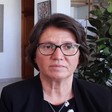
Design Considerations for a Retail CBDC

Sabrina Rochemont
25 years: Digital payments specialist
The intent of central banks is to have a new digital form of cash that can be used to the benefit of the public. A central bank digital currency (CBDC) would allow central banks to keep up with the digitisation of society. Whether CBDCs will be accepted by the public and become as valuable as cash is to daily lives is still under consideration. This video will outline the properties of cash and how CBDCs might stack up in comparison, alongside some of the design suggestions for how a CBDC might work in practice.
The intent of central banks is to have a new digital form of cash that can be used to the benefit of the public. A central bank digital currency (CBDC) would allow central banks to keep up with the digitisation of society. Whether CBDCs will be accepted by the public and become as valuable as cash is to daily lives is still under consideration. This video will outline the properties of cash and how CBDCs might stack up in comparison, alongside some of the design suggestions for how a CBDC might work in practice.
Subscribe to watch
Access this and all of the content on our platform by signing up for a 7-day free trial.

Design Considerations for a Retail CBDC
18 mins 31 secs
Key learning objectives:
Understand the properties of cash in comparison to potential CBDC properties
Identify the two different types of CBDC design and what they both mean for users
Recognise the implications of CBDCs being used in cross-border transactions
Understand the macroeconomic implications that the design of a CBDC may have
Overview:
In this video, Sabrina Rochement outlines how a central bank digital currency (CBDC) could be implemented and used by the public. Sabrina begins by comparing the properties of cash with the potential benefits of a CBDC. The potential contradictions that might arise from this form of digital currency are considered. For example, the privacy that cash affords may not be possible with a CBDC because all transactions are likely to be recorded digitally. Two forms of CBDC design are likely to prevail - a token-based CBDC and an account-based CBDC.
Subscribe to watch
Access this and all of the content on our platform by signing up for a 7-day free trial.
What are the current properties of using cash?
- Inclusiveness: Cash does not require a bank account
- Offline use: No dependency on technology, either devices or network availability
- Free to use with instant settlement (compared with clearing networks)
- Privacy: All transactions are private, do not incur a data trail
- Security
- Wide acceptance
What are the two forms of CBDC?
A token-based CBDC: The digital version of cash, where the object is transferred from one wallet to another. The focus is on the verification of the validity of the token.
An account-based CBDC: Would see the transfer of a claim recorded from an account to another. The focus is on the verification of the identity of the account holder.
What are the key advantages and drawbacks of holding a CBDC account at the central bank?
Advantages:
It could support crime and fraud detection, although organised crime would be unlikely to use this conduit. It may help the central bank and associated government identify vulnerable groups, especially those locked out of the commercial banking system. They could deliver welfare directly (helicopter money), without relying on commercial intermediaries.
Drawbacks:
Central Banks would become competitors in the retail market ecosystem. Central banks would have to become involved with retail lending activities.The public may be concerned about potential abuse of power by governments through the central bank, so there could be an issue with trust.
What are some of the challenges of CBDCs facilitating cross-border transactions?
Cross-border transactions sit at the heart of international trade and economic activity. Their challenges are widely recognised as:
- High cost at around 7%
- Low speed due to disparities in national regulations. Cryptocurrencies such as Bitcoin target this inefficiency as part of their unique selling proposition.
- Limited access
- Insufficient transparency
Subscribe to watch
Access this and all of the content on our platform by signing up for a 7-day free trial.

Sabrina Rochemont
There are no available Videos from "Sabrina Rochemont"



























